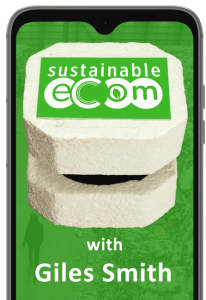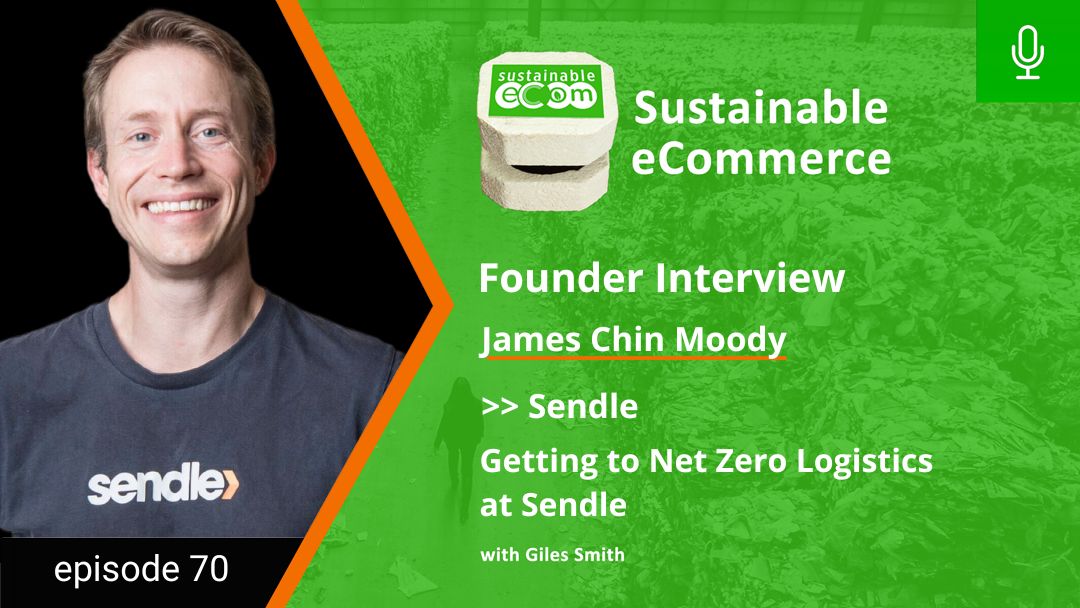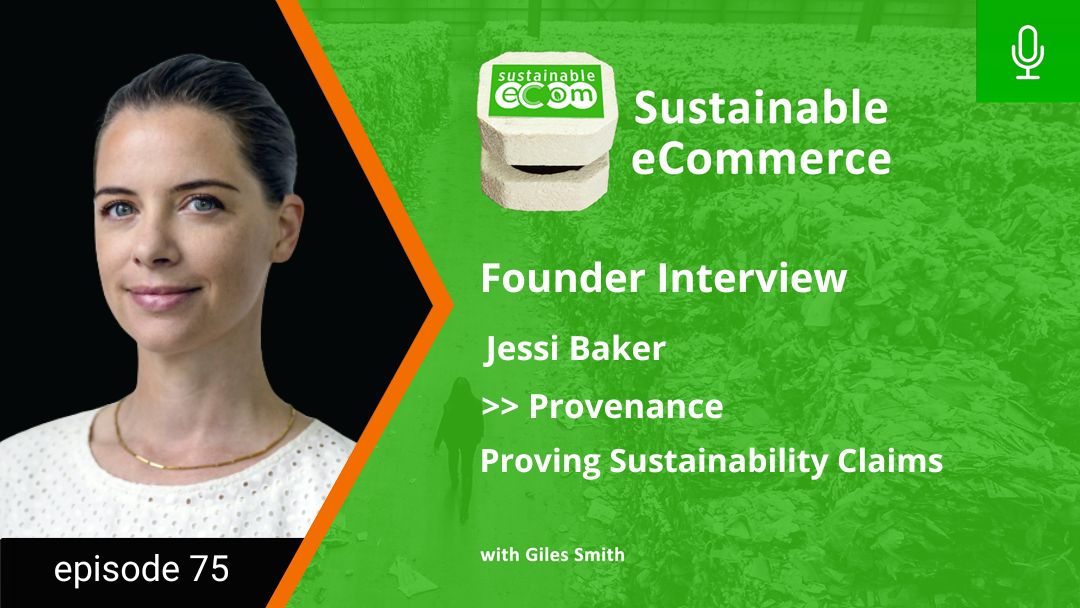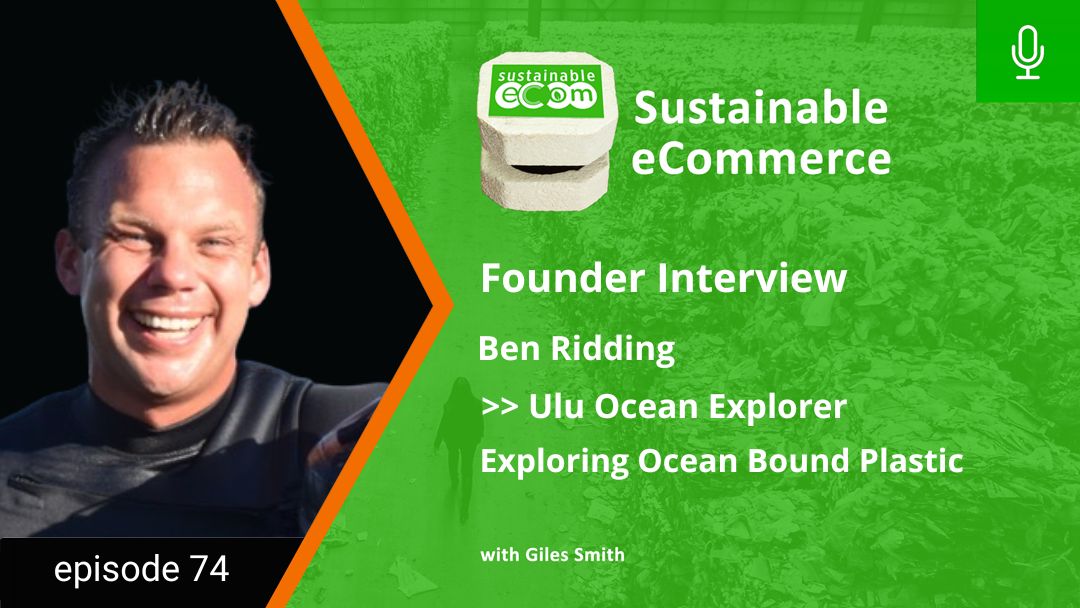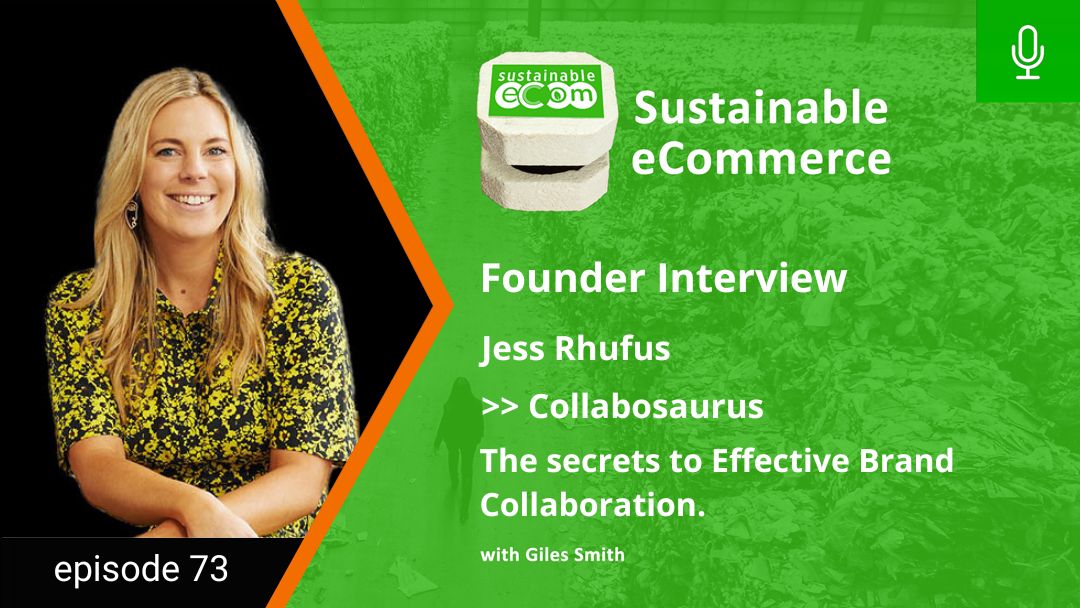Sustainable Ecommerce Podcast Episode 70
Let's start with a little riddle.
What am I? I am used by every single physical product brand in every vertical. I am essential to your business model. I am essential to your customer experience yet I am almost completely out of your control. I am one of the largest part of your cost base and one of the largest parts of your carbon footprint.
Did you figure it out?
Of course, I’m talking about logistics, specifically order delivery. Its something that most brands take for granted, and like I alluded to, simply go with the easiest or cheapest option.
Of course these days, Australia Post has made giant strides to reduce their carbon footprint, but the provider that challenged them to do that and to this day is still leading the way in terms of sustainability innovation with their drive towards Zero emissions and support for circularity is of course Sendle.
Today I’m chatting with James Chin Moody, the founder and CEO at Sendle, about their journey from humble gifting company to global logistics provider. We chat about the complexities of Net Zero logistics, about challenging state-run monopolies, and about how Sendle’s operational DNA is quite different to other logistics providers, putting them in the driver’s seat to empower the circular economy.
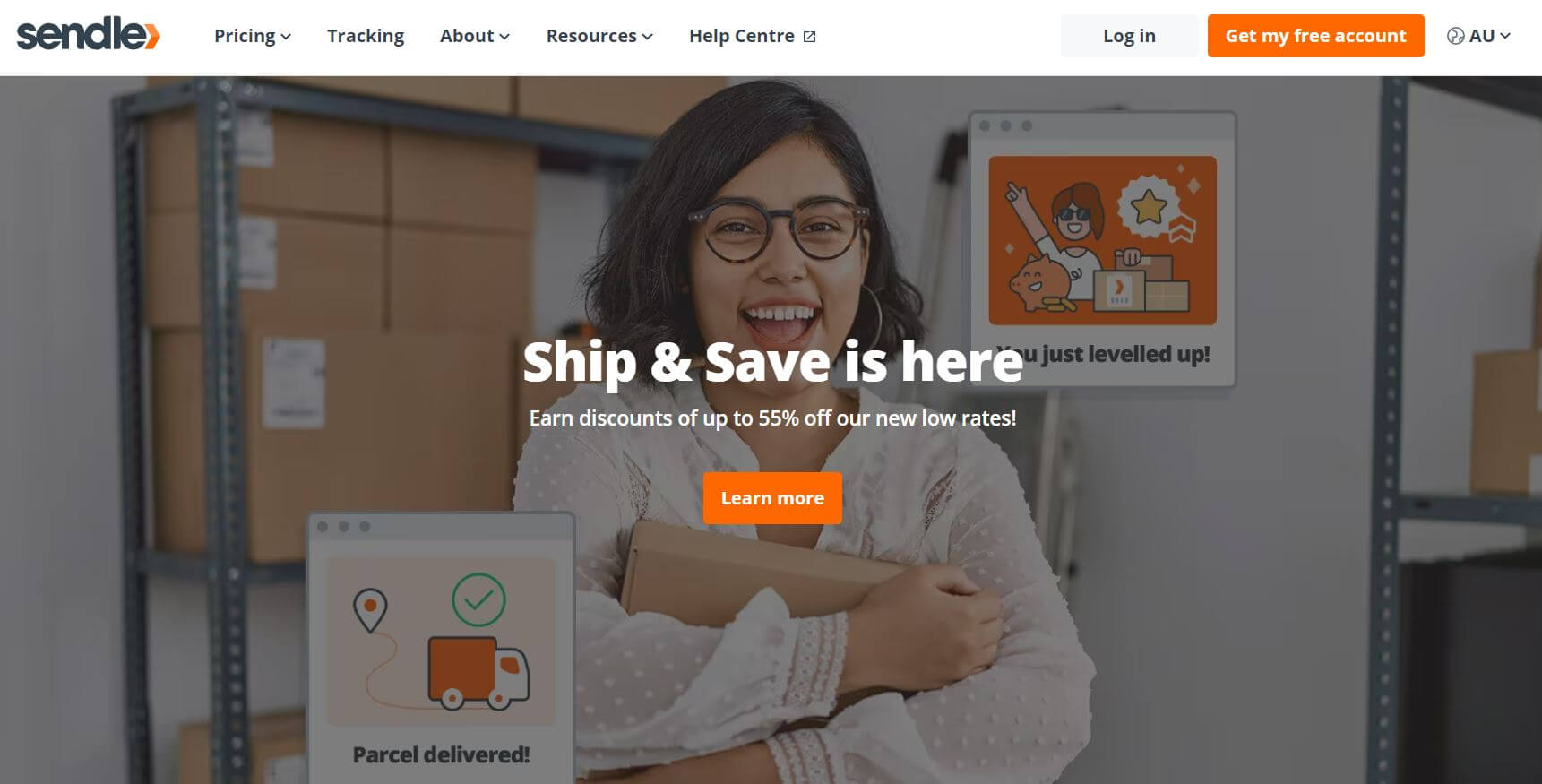
About James Chin Moody & The Origins of Sendle
James started out his career as a satellite engineer. Studying satellite imagery made him realise that we are all together on this rocketship called Earth, and that dawning realisation of Earths finite nature caused him to adjust path into sustainability.
He completed a PhD in business administration focussing on innovation theory, before co-authoring a book on decoupling economic growth from resource extraction called the Sixth Wave.
In 2000 he became the Australian representative at the youth advisory council of UNEP, and is currently on the advisory council of the Australian Bureau of Statistics and an Australian National Commissioner for UNESCO.
After the birth of his second Child, James stepped in as a full time parent, and during that time looked to build another company.
Sendle was born initially as a socially conscious gifting company, but ran into a major roadblock: It turned out that there was no easy solution available to facilitate the transfer of parcels between any two locations, cheaply, easily and with a single unit quantity. Solving that problem became James’ next obsession, and defined the very DNA of how Sendle serves the small business community.
Shortly after launch in 2014, Sendle became Australia’s first Technology B Corp, and the first logistics company in Australia to offer fully offset, Carbon Neutral deliveries.
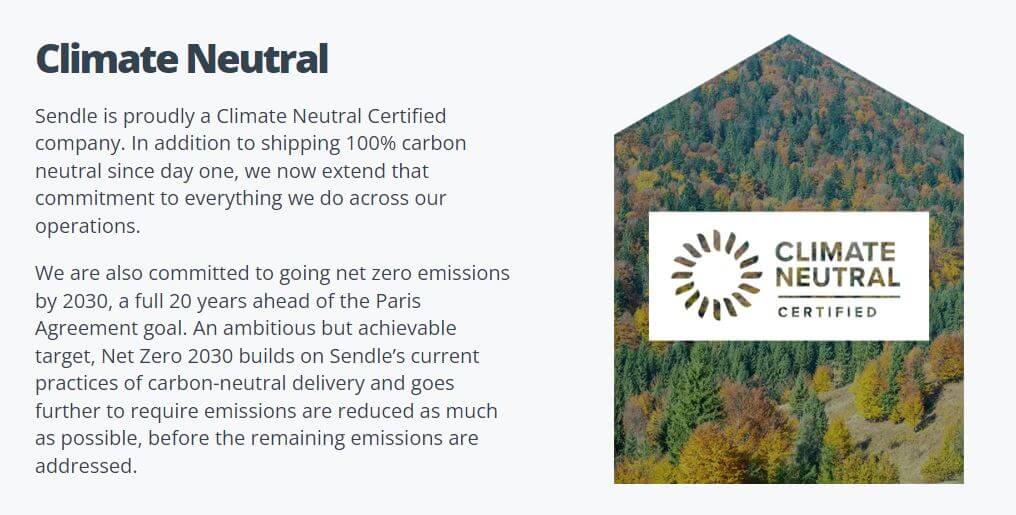
Taking on a state-based monopoly (Australia Post)
Tackling Australia Post as a competitor was never really the main objective. The goal was always to level the playing field between big corporations and small business, and in doing so help accelerate the transition to Carbon Neutral shipping.
James viewed Australia Posts’s hegemony as almost invisible, given that being part of the national consciousness it was effectively a monopoly wrapped in a habit. The reality is though that that level of market dominance was holding the industry back in terms of pricing and accessibility. However, with national scale infrastructure, working with Australia Post was always going to be an essential part of the solution.
Sendle’s model not only allowed them effective coopetition with Australia Post, but has allowed them to deploy that same model to great effect in markets dominated by USPS and Canada Post as well.
How Sendle are changing the game on pricing
With parcel delivery being an essential component of all eCommerce operations, it inevitably becomes a cost-sensitive service. After all, as Shopify have shown, 60% of cart abandonment occurs on the shipping page, mostly due to unexpected cost of delivery.
Sendle aims to focus on quality of service rather than being low cost, but at the same time recognises that cost is an essential component to accessibility for small business. Unlike Australia Post and many other delivery companies who own and have a huge cost base attached to their delivery assets, Sendle don’t own any delivery infrastructure.
Instead, their model is based on aggregating the demand from many smaller businesses, and using that as leverage to access the enterprise-level services that would normally be out of reach for small business. In doing so they are able to tap into economies of scale in the existing network without owning the assets.
That effectively means that as they scale, they can access cheaper rates and then pass those savings onto their customers. The result is that as Australia Post announced significant price increases to cover the cost of inflation and the increasing expense of maintaining infrastructure, Sendle announced a variety of money saving plans to help small business. That included volume-based pricing as well as a new small-parcel tier of only 250, set to be Australia’s cheapest parcel delivery.

How does the Sendle Model help with the Circular Economy?
According to James, the Circular Economy is essentially enabled by the movement of items, thus logistics is pivotal to a viable economic model for circular business. Often operations are centralised for production, and then decentralised to distribution, which is OK for the hub & spoke systems operated by Australia Post. However the reverse flow is generally a real challenge, since even if items can be collected, they tend to be taken back to a central sorting depot, making the economics difficult to handle.
However the Sendle model has always been based on “sending parcels from anyone – to anyone – with a minimum of 1”. That requires more of a network approach than a solid structure, exactly the model that Sendle have developed with their network of partners. As a result, their model can easily be adapted to be a collections network, and they have started trialling it with things like coffee pod collection services. As with all logistics, especially reverse logistics, gaining economic viability is usually about usage density, and James believes with the growing demand for recommerce, this will soon be a viable model in Australia, at least in the Eastern Seaboard population centres.
Going from Carbon Neutral to Net Zero
Sendle has always taken complete responsibility for the carbon footprint of their deliveries, even though they are using partners. In the early days, that meant treating every parcel like a delivery between Sydney and Perth, even if it was only local, and that philosophy resulted in them becoming one of the world’s first carbon-neutral delivery companies.
Of course, Carbon Neutral achievements have largely been through offsets to date, since they leverage legacy delivery fleets of their partners. The challenge from here is to move to real footprint reduction, and the company has a goal to be Net Zero across their network by 2030.
Achieving that is a complex initiative and involves focus in a number of areas. Delivery route efficiency helps to quantifiably reduce the carbon miles parcels need to travel. Transitioning from Air to Sea, from Air to Road, and from Road to Rail is way to help reduce the carbon intensity of those travelled miles. And then a big part of the solution is leveraging their growing influence over their network of partners to enable the electrification of delivery fleets. A significant part of that challenge is enabling suitable charging infrastructure so that vehicles can be recharges while being loaded between runs and on rest breaks etc.
In late June 2023, Sendle announced the roll out of Australia’s first solar powered delivery fleet in partnership with Bonds Couriers.
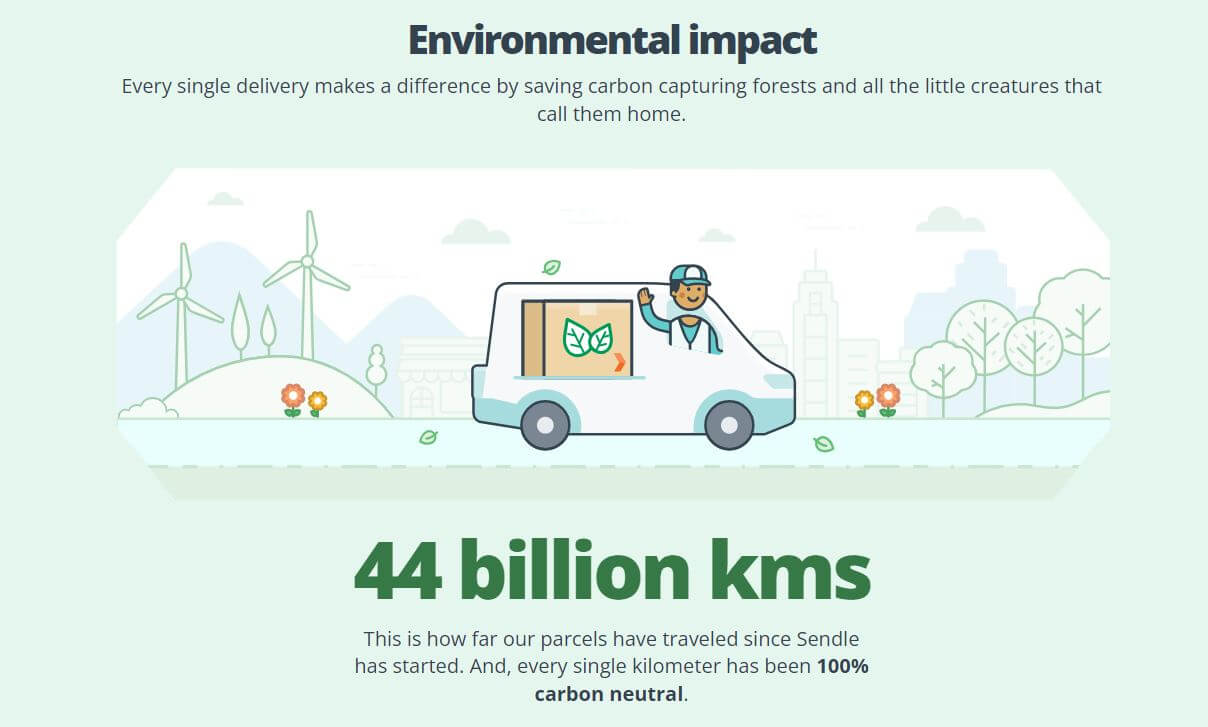
Transparency & Efficacy of Carbon Offsets
Ensuring that the significant investment Sendle makes in Carbon Offsets is spent on high quality, traceable offset projects is of critical importance. For that reason, they are always independently audited, and purchase their offsets through South Pole.
Choosing the right projects for James means focusing on real carbon sequestration so that the investments actually help repair the atmosphere. They have also invested in projects that have positive social benefits, including things like cook stoves. Annually Sendle invite their customers to vote on the projects they will adopt for the following year.
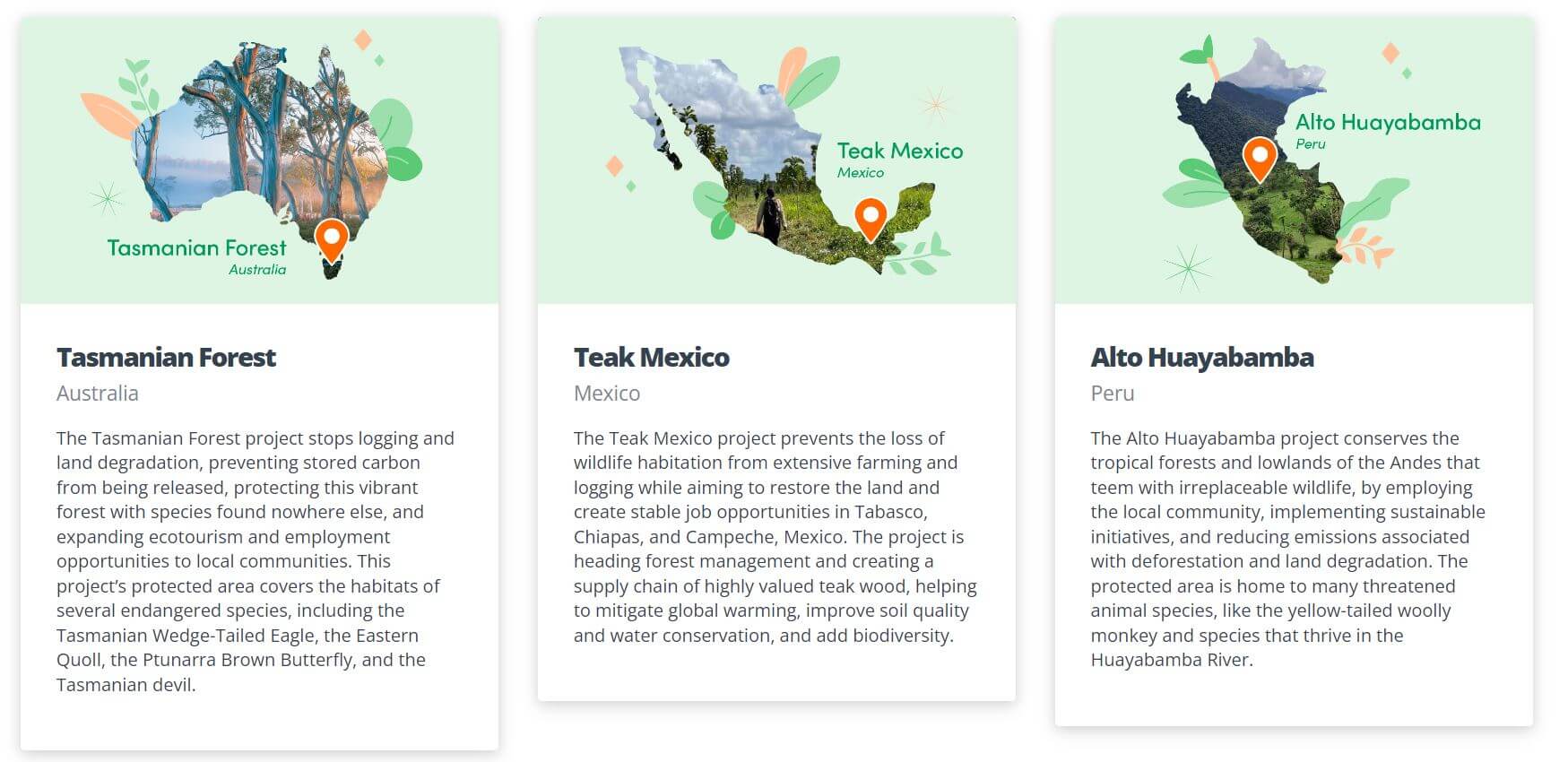
How are Sendle supporting last mile delivery with PUDO
PUDO (Pick Up Drop Off) Points are a rising phenomenon across Europe and the US, and a significant contribution to more sustainable deliveries given that they increase delivery density. Sendle already operate 1500 drop off points in the Australian network, and support that strategy as part of their Net Zero strategy. However, the key to making those work is really about making it easy for customers to get their parcels.
In locations like London with extensive public transport systems, the concept works extremely well, but it is far less effective in Australia since we have a much weaker network. For that reason, James doesn’t believe we’ll see PUDO take over from home delivery any time soon here in Australia.
Top Takeouts
Firstly, hats off to Sendle. Their focus on bringing enterprise scale logistics to small business has enabled them to tackle national logistics monopolies, not just here in Australia, but with USPS and Canada Post too.
Until my conversion with James today I don’t think I realised just how extensive their operation had become. The fact that they have now sent parcels from every postcode in the US to every Post code in the US is a testament to the robustness of their network, and that’s again shown in their impact. 47 Billion KM of Carbon Neutral parcel delivery!
And of course is the Carbon Neutral part that they’re perhaps best known for, and rightly so. Of course that’s been achieved through offsets, but the team is actively working towards Net Zero, largely through leveraging their growing influence with supply partners.
In fact, shortly after we recorded this episode, Sendle Announced that they were rolling out Australia’s first fleet of solar fuelled EV delivery vehicles in partnership with Bonds Couriers. So once again, they’re stepping up & leading the way for other logistics operators to follow.
Finally, if you haven’t used Sendle before, or if you’re currently using Australia Post because of their volume price tiering, it’s worth noting that from July 2023, Australia Post prices have gone up, while Sendle have implemented a completely new, money saving pricing structure.
Plus as James said, their new 250g parcel is effectively the cheapest parcel service in Australia now. Being cheaper and better for the planet definitely makes it a compelling story for your sustainable brand.





